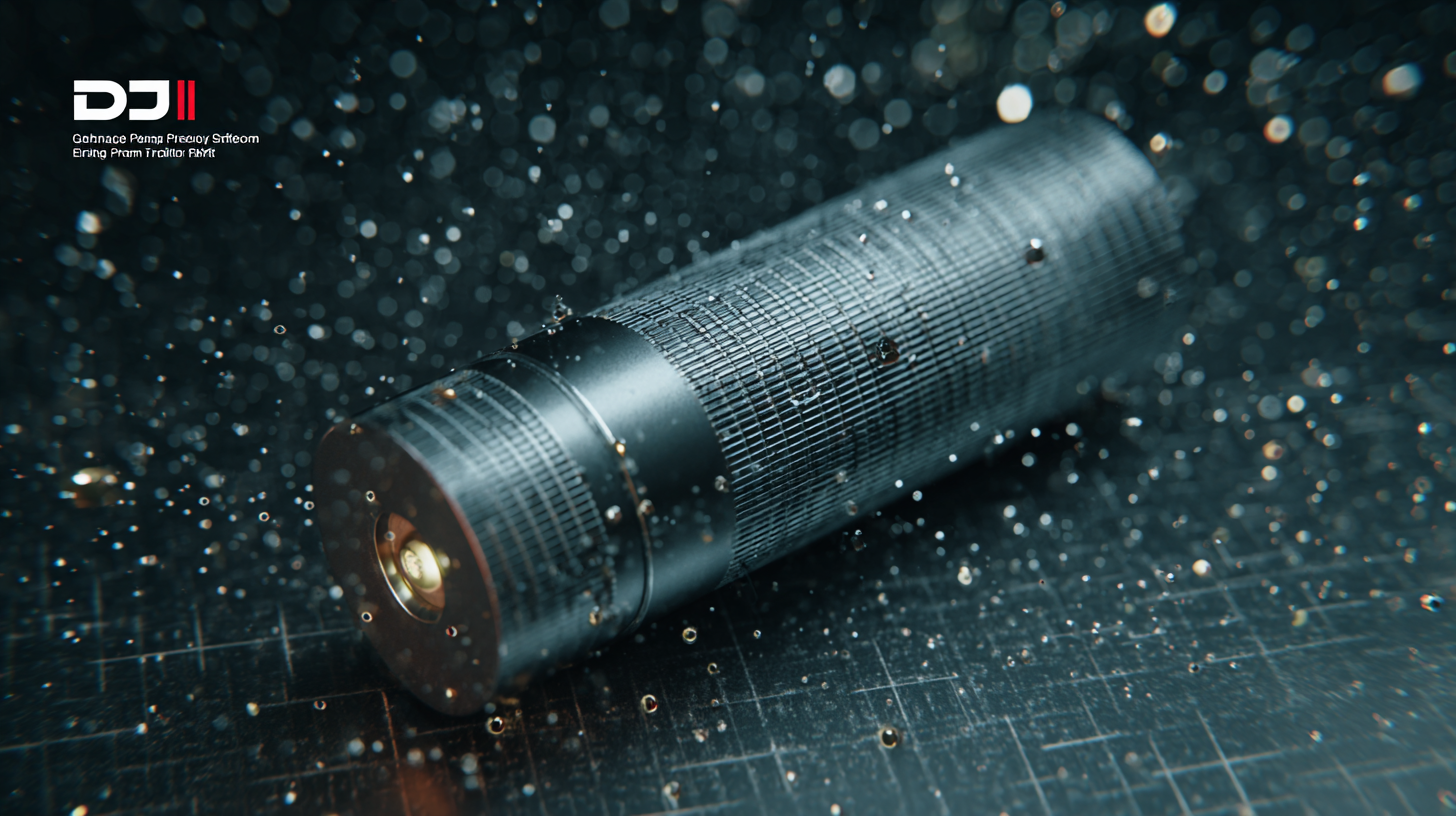Unlocking Performance Enhancements with Best Graphite Thermal Film Benefits
The advancement of technology in various industries has led to a burgeoning demand for innovative materials that enhance performance and efficiency. One such material that has gained significant attention is Graphite Thermal Film. This remarkable product offers exceptional thermal conductivity and is ideal for a wide range of applications, from consumer electronics to automotive components. As China continues to be a leading manufacturer in this sector, the country’s export prowess showcases its ability to meet global demands while maintaining high-quality standards.

In this blog, we will explore the benefits of Graphite Thermal Film, the key features that unlock its performance enhancements, and how it plays a crucial role in optimizing thermal management solutions worldwide. Join us as we delve into the pivotal role this material plays in advancing technology and achieving superior performance in today's competitive market.
Understanding Graphite Thermal Films: Properties and Composition
Graphite thermal films have emerged as a vital component in enhancing the thermal management of electronic devices. These advanced materials primarily consist of graphite flakes or sheets, which boast excellent thermal conductivity, often exceeding 1500 W/mK. This remarkable property allows for efficient heat dissipation in high-performance applications such as smartphones, laptops, and LED lighting. The unique layered structure of graphite enables it to transfer heat quickly, making it an ideal choice for preventing overheating in compact electronic systems.
In a recent industry report, it was noted that the global demand for thermal films, particularly graphite-based ones, is projected to grow at a CAGR of 7.5% from 2021 to 2026. This growth can be attributed to the increasing need for effective thermal management solutions in emerging technologies, including electric vehicles and renewable energy systems. Additionally, graphite thermal films are lightweight and flexible, offering ease of integration into various designs without significantly adding to the overall weight, a crucial factor for portable devices. As manufacturers continue to prioritize performance and efficiency, the adoption of graphite thermal films is likely to play a pivotal role in the future of thermal management solutions.
Key Benefits of Graphite Thermal Films in Electronics Cooling Solutions
 Graphite thermal films have emerged as a pivotal component in the realm of electronics cooling solutions, primarily due to their exceptional thermal conductivity and efficiency. According to a report by Persistence Market Research, the global thermal management market, which includes materials like graphite thermal films, is projected to reach $15.5 billion by 2027, growing at a CAGR of 9.5%. This surge is largely attributed to the increasing demand for high-performance electronics, which necessitate effective heat dissipation mechanisms to prevent overheating and ensure reliability.
Graphite thermal films have emerged as a pivotal component in the realm of electronics cooling solutions, primarily due to their exceptional thermal conductivity and efficiency. According to a report by Persistence Market Research, the global thermal management market, which includes materials like graphite thermal films, is projected to reach $15.5 billion by 2027, growing at a CAGR of 9.5%. This surge is largely attributed to the increasing demand for high-performance electronics, which necessitate effective heat dissipation mechanisms to prevent overheating and ensure reliability.
One of the key benefits of graphite thermal films is their lightweight and flexible nature, allowing for seamless integration into compact electronic devices without compromising performance. These films can achieve thermal conductivities exceeding 300 W/mK, outperforming traditional materials like copper and aluminum in many applications. Research from TechInsights indicates that implementing graphite thermal solutions can enhance overall device efficiency by up to 30%, significantly extending the lifespan of critical components in devices such as smartphones, laptops, and electric vehicles. This makes graphite thermal films an invaluable asset in modern electronics, driving innovation and efficiency across various sectors.
Performance Metrics: How Graphite Thermal Films Improve Efficiency
 Graphite thermal films are quickly becoming essential components in the realm of thermal management, particularly for electronic devices. With their excellent thermal conductivity—rivaling that of metals—these films effectively dissipate heat away from critical components, ensuring optimal operating temperatures. This capability is crucial in devices where maintaining high performance and reliability is essential, such as smartphones and laptops. By minimizing hotspots, graphite thermal films help reduce the risk of overheating, which can lead to hardware failures and decreased efficiency.
Graphite thermal films are quickly becoming essential components in the realm of thermal management, particularly for electronic devices. With their excellent thermal conductivity—rivaling that of metals—these films effectively dissipate heat away from critical components, ensuring optimal operating temperatures. This capability is crucial in devices where maintaining high performance and reliability is essential, such as smartphones and laptops. By minimizing hotspots, graphite thermal films help reduce the risk of overheating, which can lead to hardware failures and decreased efficiency.
In terms of performance metrics, the inclusion of graphite thermal films can significantly enhance the overall efficiency of electronic systems. These films not only improve heat distribution but also decrease thermal resistance, which translates into more reliable and consistent performance. Users have reported improvements in energy consumption as devices equipped with graphite thermal films can run cooler, allowing systems to maintain higher processing speeds without throttling. Consequently, integrating these advanced materials into designs enables manufacturers to push the boundaries of what’s possible, facilitating both compact form factors and high-performance capabilities without compromising thermal safety.
Industry Applications: Where Graphite Thermal Films Make a Difference
Graphite thermal films are revolutionizing thermal management across various industries, thanks to their exceptional thermal conductivity and versatility. In the electronics sector, these films play a crucial role in dissipating heat from high-performance components, such as CPUs and GPUs. By efficiently transferring heat away from sensitive areas, graphite thermal films help maintain optimal operating temperatures, enhancing device reliability and extending lifespan. Their thin profile also allows for compact designs, making them ideal for modern consumer electronics.
In the automotive industry, graphite thermal films are utilized in electric vehicle (EV) applications. As EVs rely heavily on battery efficiency, managing heat is critical to performance and safety. Graphite films are employed to regulate temperatures within battery packs, ensuring efficient operation and preventing overheating during charging cycles. Additionally, their lightweight nature contributes to improved overall vehicle efficiency, aligning with the industry's push for sustainability and enhanced performance. As industries increasingly prioritize thermal management solutions, the benefits of graphite thermal films will continue to expand, driving innovation and efficiency across the board.
Unlocking Performance Enhancements: Benefits of Graphite Thermal Films
This chart illustrates the performance benefits of graphite thermal films across various industry applications, highlighting their significant influence on thermal conductivity, weight reduction, and overall efficiency.
Comparative Analysis: Graphite Thermal Films vs. Traditional Thermal Interface Materials
When it comes to efficient heat management in electronic devices, the choice of thermal interface materials (TIMs) is critical. Traditional options such as thermal pastes and pads have been standard for years, but they come with limitations in terms of thermal conductivity and application complexity. In contrast, graphite thermal films are emerging as a superior alternative. These films offer significant enhancements in thermal performance due to their high thermal conductivity and excellent flexibility, allowing them to conform to various substrate shapes without compromising efficiency.
A key advantage of graphite thermal films lies in their lightweight and thin profile, which is particularly beneficial for modern electronics that prioritize compactness and portability. Unlike traditional TIMs that often require meticulous installation and can degrade over time, graphite films are easy to apply and maintain their performance over extended periods. Additionally, they exhibit excellent thermal stability and durability, making them ideal for high-performance applications in areas like power electronics, LED lighting, and consumer devices. Their ability to efficiently transfer heat ensures that components operate within optimal temperature ranges, thereby enhancing overall system reliability.